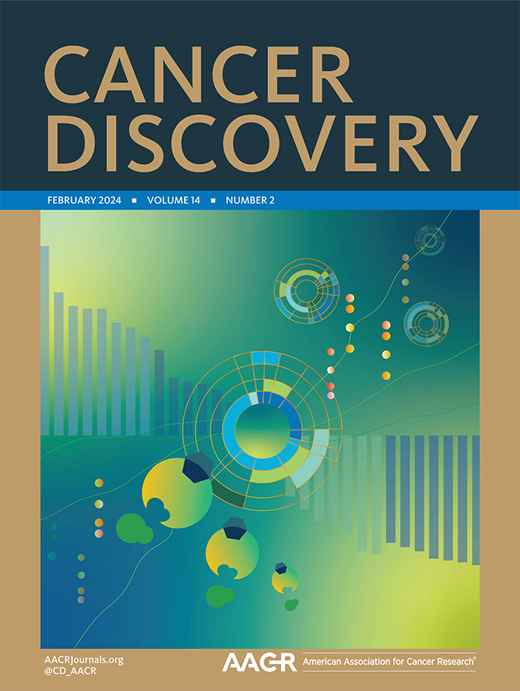Intra-hepatic microbial heterogeneity in multifocal hepatocellular carcinoma and its association with host genomic and transcriptomic alterations
IF 33.3
1区 医学
Q1 ONCOLOGY
引用次数: 0
Abstract
The signature of intrahepatic microbiome in multifocal hepatocellular carcinoma (HCC) and its association with genomic alterations remain elusive. Here, we performed multi-omics profiling of 242 HCC tumor nodules and 58 adjacent non-tumor tissues from 58 multifocal HCC patients, revealing heterogeneous microbial communities in multifocal HCC. Presence of bacteria in HCC nodules was confirmed by gram-stain, LPS, LTA staining and TEM. Mutational profiling stratified patients into intrahepatic metastasis (IM)-HCC and multicentric occurrence (MO)-HCC. Bacterial communities differed between IM and MO nodules (P=0.01). A 9-bacteria biomarker panel could distinguish IM nodules from MO nodules with AUROC of 0.795. Epithelial-mesenchymal transition (EMT) pathway was up-regulated in IM nodules and correlated with IM-enriched bacteria. IM-enriched bacteria such as Enterococcus faecalis and Streptococcus anginosus promoted HCC cell migration and invasion, and tumor progression in orthotopic HCC mouse models by inducing immunosuppressive microenvironment and EMT. Collectively, intrahepatic microbiome contributes to heterogeneity and pathogenesis of multifocal HCC.多灶性肝细胞癌肝内微生物异质性及其与宿主基因组和转录组改变的关系
多灶性肝细胞癌(HCC)中肝内微生物组的特征及其与基因组改变的关系仍然难以捉摸。在这里,我们对来自58例多灶性HCC患者的242个HCC肿瘤结节和58个邻近非肿瘤组织进行了多组学分析,揭示了多灶性HCC中异质性的微生物群落。革兰氏染色、脂多糖染色、LTA染色和透射电镜证实肝细胞癌结节中存在细菌。突变分析将患者分为肝内转移(IM)-HCC和多中心发生(MO)-HCC。IM和MO结核细菌群落差异有统计学意义(P=0.01)。9种细菌的生物标志物可区分IM结节和MO结节,AUROC为0.795。上皮-间质转化(EMT)途径在IM结节中上调,并与IM富集菌相关。在原位肝癌小鼠模型中,富含im的细菌如粪肠球菌和血管链球菌通过诱导免疫抑制微环境和EMT促进肝癌细胞的迁移和侵袭,促进肿瘤进展。总的来说,肝内微生物组有助于多灶性HCC的异质性和发病机制。
本文章由计算机程序翻译,如有差异,请以英文原文为准。
求助全文
约1分钟内获得全文
求助全文
来源期刊

Cancer discovery
ONCOLOGY-
CiteScore
22.90
自引率
1.40%
发文量
838
审稿时长
6-12 weeks
期刊介绍:
Cancer Discovery publishes high-impact, peer-reviewed articles detailing significant advances in both research and clinical trials. Serving as a premier cancer information resource, the journal also features Review Articles, Perspectives, Commentaries, News stories, and Research Watch summaries to keep readers abreast of the latest findings in the field. Covering a wide range of topics, from laboratory research to clinical trials and epidemiologic studies, Cancer Discovery spans the entire spectrum of cancer research and medicine.
 求助内容:
求助内容: 应助结果提醒方式:
应助结果提醒方式:


